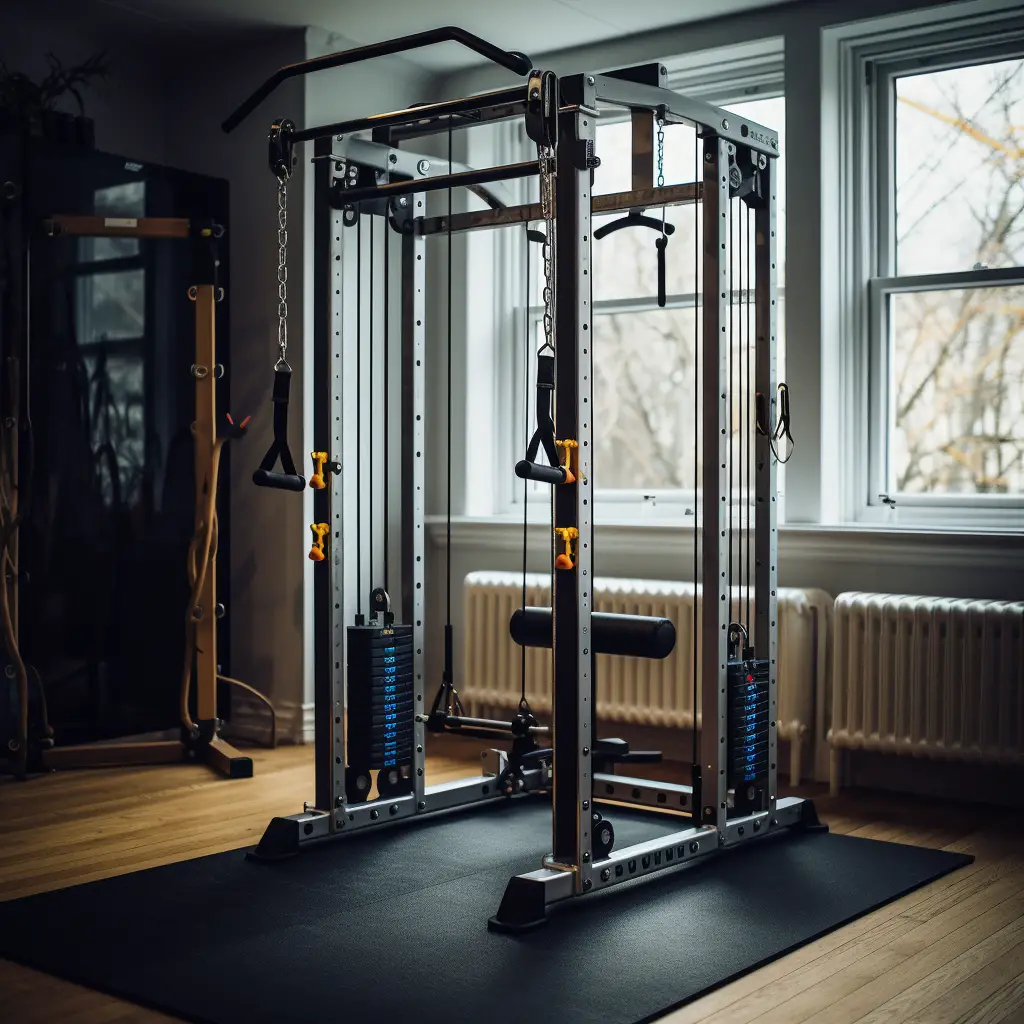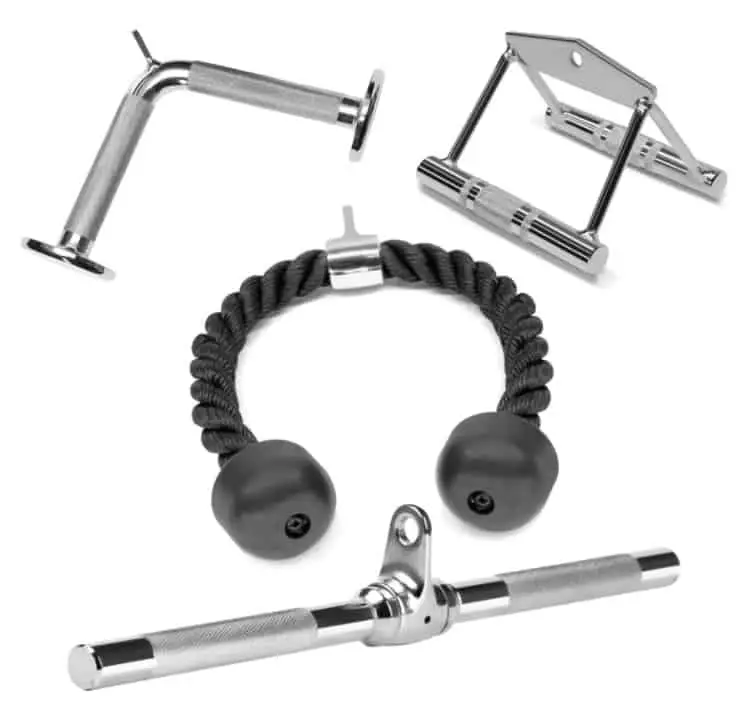A functional trainer is a very versatile piece of gym equipment but it costs quite a bit of money so you want them to last for a long time. What kind of lifespan can you expect from a functional trainer and its parts?
In general, high-quality functional trainers will last at least 15-20 years if it is maintained properly. The frame and weight stack don’t wear and corrosion is the only vulnerability that can be prevented. Cables, pulleys, and attachments are considered wear items and should be replaced regularly.
Below we’ll go into what wears on a functional trainer and what the wear parts are.
Contents
How Long Do Functional Trainers Last?

That’s a bit like asking; how big is a balloon. It depends. It depends on the quality of the machine you began with, the customer service of the company you bought it from (parts availability), where it’s put, how often it’s used, and how well you maintain it.
Functional trainers can last 15-20 years provided it’s a quality piece of equipment and it’s properly maintained over it’s lifespan.
Yes, that’s a lot of different factors. However, functional trainers are generally built to last. Manufacturers know they’re expensive and brand image is important just like in other industries.
In general, cable crossovers will last at least 15-20 years if the machine is of good quality to begin with and is maintained properly. The frame and weight stack really don’t wear and corrosion is the only vulnerability that can be prevented. Cables, pulleys, and attachments are considered wear items and have to be replaced regularly. The frame and weight stack can last longer than that but after so long, the parts availability will become a problem.
I am talking about residential use here. For commercial use, the considerations are different.
Cable Station Parts Lifespan
Here is what kind of lifespan you can expect from the different parts of a functional trainer. Of course, this assumes an ‘average’ situation with proper maintenance. There are many parts to a cable machine and not all of them wear at the same rate:
Let’s take a look at those parts separately and what kind of lifespan you can expect from them.
Frame
The frames of cable crossovers are very unlikely to wear out or break in any amount of time. They are made from thick steel tubing. And the different parts are connected with big bolts. The tubing is usually powder-coated to prevent corrosion and of course to make it look nice.
There really isn’t anything that can go wrong with this as long as the machine is treated with some care. Corrosion is going to be the biggest enemy here. As long as it’s placed in a location with limited moisture exposure and dried if it got wet (more on prevention below).
Suggested: How much does a functional trainer weigh?
Don’t put a functional trainer outside and limit the exposure to UV light since this can quickly degrade the coating but also the ‘softer’ parts like cables, plastics, and rubber parts.
So if maintained properly, the frame can last a very long time. Most good brands give 10 years up to a lifetime warranty on the frames of cable stations.
Weight stack

The weight stack is similar to the frame. They’re steel plates, usually, they’re coated with some durable layer or even rubberized. Over time the coating can wear off and then they become vulnerable to corrosion. This takes a long time and mainly depends on how often you change weights and how precise you are with putting the pin in the hole…
The most common place to see the coating wear off the plates is just around the hole to put the pin in to choose the weight. If this starts happening, consider taking out the weight stack and putting on a coat of hammertone or similar protection. Although,
Another way the weight stack of a functional trainer or any cable machine could be damaged is just by abuse. Dropping the weight stack down uncontrolled from high. Try to always control the weights down as smoothly as possible. Controlling the weight on the way down is better for muscle growth anyway.
Dropping the weights incidentally shouldn’t be a problem but if you do this multiple times a workout, over time the plates can start getting stress fractures and possibly even break. It’s rare but not impossible, especially with lower-quality stacks.
When treated right, weight stacks should last just as long as the frame.
Cables

Then we get to the other parts. There are things like cables, pulleys, shrouds, rubber parts, etc.
Cables are the part that’ll require the most maintenance on a functional trainer. They can stretch a little so they’ll have to be adjusted over time. This isn’t a big deal once you do it a few times.
The cables can also just wear out. They rarely outright snap unless you let it go too far. The cables on gym machines have a nylon coating around a metal core. The core consists of many different strands. When the nylon coating starts to wear, gets loose, starts exposing the metal it’s time to replace it.
Suggested: How to repair a cable on a home gym machine
This isn’t too difficult but a bit of a pain especially the first time. The cables are what make a cable crossover what it is though and the cables have to be replaced at some point. Again, they have to be replaced when the nylon coating starts to fail. How long does this take before it happens? That all depends on how often and how heavy you train and the quality of the cable.
In general, the cables on a functional trainer should last at least a year with heavy use. With normal use, it’s longer. Once the nylon starts fraying, just replace the cable.
Pulleys

The bearings in the pulleys can wear out over time. It will take a long time and they should last much longer than the cables. The pulley wheel will very rarely break but it is possible. The whole pulley and bearing are usually replaced as one piece anyway.
Pulleys should last for years without problems. Sometimes the cable can jump and get stuck next to the pulley wheel. If this is the case, this can really damage both the cable and pulley. Try to take as much weight off the cable as possible (maybe wedge something under the weights if the stack is elevated), and carefully release the cable and put it back into its normal path. The cable jumping out of the pulley is a sign that the cable has too much slack in it and should be adjusted or you should slow down your movements a little bit.
Click here to read more about pulley maintenance.
Rubber and plastic
Rubber and plastics can break down over time. UV light is a big factor here so keep your functional trainer out of the sunlight. However, they also just become hard and brittle with age. On a cable trainer, the stack shroud is usually some type of plastic. It will last many years without issues and even if it did break, it doesn’t really impact the functioning of the machine.
Rubber is sometimes located on the pull-up handles. This can start moving and tearing up after a few years if you do pull-ups regularly. This doesn’t look great and is less comfortable for your hands but doesn’t really impact any functionality. If you’re worried about this, getting a machine that just has a metal pull-up bar is better.
Attachments

The accessories you attach to the cable ends are also subject to some wear. They aren’t really part of the cable machine but they are necessary to use it. These are the parts you touch all the time and so are subject to the most wear. They have to deal with sweaty hands and constant tension. This makes them wear a bit quicker than other parts although it does depend on the material.
Suggested: 5 Essential home gym cable attachments
Any nylon or rubber parts will wear over a few years. These are pretty cheap and easy to replace though.
Attachments that are completely made from metal will get a weathered look but the functionality won’t be impacted. In some cases, there is a bushing to allow the attachment to rotate individually from the cable. That pivot point can start feeling notchy or sticky and prevent smooth rotation. A bit of grease in there will fix that really quickly though. Besides that, you’re not going to wear through a metal attachment in a lifetime.
Find the cable attachments I recommend for a home gym here.
Summary
To recap, the frame, weight stack, and other metal parts will last a very long time. If maintained properly they should last at least 15 years but probably longer. Cables have to be adjusted and replaced most regularly but they should last at least a year or longer with normal use. Pulley bearings can wear out over time but it takes quite a few years and probably several cable replacements for that to happen. Plastic and rubber parts can wear or break but usually, that doesn’t impact the functionality of the machine. Finally, rubber and nylon parts of cable attachments will have to be replaced every few years but metal ones can last a very long time with minimal maintenance.
A functional trainer should last at least about 15 years or longer with proper maintenance and replacement of wear items. The frame and weight stack can last longer and if you just care about functionality they can last for decades. At some point getting parts will become difficult though.
